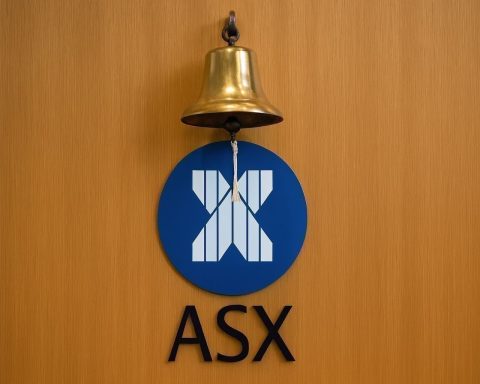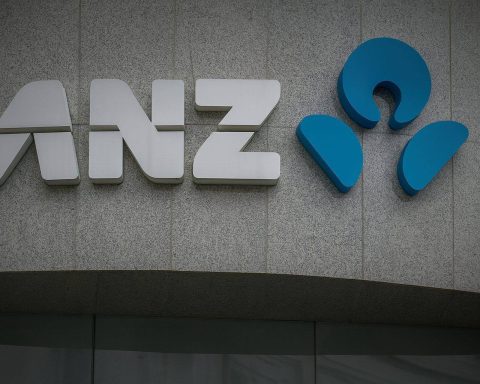- Record Highs: Both gold and Bitcoin shattered all-time highs in early October 2025. Gold broke above $4,000 per ounce for the first time ever, while Bitcoin blasted past $125,000 per coin to a new peak [1]. Each pulled back slightly after these milestones (gold around $4,030; Bitcoin near $123K) [2]. Gold’s year-to-date gain stood near +53%, outpacing stocks (~15% YTD) and even Bitcoin (~+30% YTD) [3] [4] – making gold one of 2025’s top-performing assets.
- Flight to Safety: A global rush into safe havens drove both assets’ rallies. Investors alarmed by surging inflation, a looming U.S. government shutdown, geopolitical conflicts (Ukraine war, Middle East tensions), and a weakening dollar (USD index down ~12% in 2025) piled into gold and its “digital gold” counterpart, Bitcoin [5] [6]. This flight-to-safety dynamic propelled gold and BTC in tandem, a rare alignment signaling hedging behavior amid economic angst.
- Recent Volatility – Tariff Shock: In early October’s “Uptober” rally, Bitcoin neared record highs above $125K while gold held over $4K – until an Oct. 10 trade-war bombshell roiled markets. That day, President Donald Trump’s surprise threat of a massive 100% tariff on Chinese imports sparked a sudden risk-off panic [7]. Bitcoin plunged from ~$122K to ~$114K within hours (an $8K intraday drop), and overnight fell as low as ~$104K – erasing virtually all its early-October gains [8] [9]. An estimated $20 billion in crypto positionswas liquidated in 24 hours amid the chaos – the largest one-day wipeout on record, even exceeding the worst of the March 2020 crash [10]. In contrast, gold spiked about 1.5% on the tariff news, climbing back above $4,000 as investors flocked to the traditional safe haven [11].
- Analyst Forecasts: Despite near-term turbulence, many experts see more upside ahead. UBS now projects gold could reach ~$4,200 in coming months, and Goldman Sachs forecasts ~$4,900 by 2026 [12]. Major banks have likewise raised Bitcoin targets: Standard Chartered predicted Bitcoin may hit ~$135,000 in the very near term (and even ~$200K by year-end if current trends persist), while JPMorgan boosted its 2025 year-end BTC target to ~$165K [13]. Citi analysts put a base-case of ~$133K (with a bull-case up to $181K within 12 months) [14]. These bullish outlooks reflect strong demand, weakening fiat confidence, and the impact of new Bitcoin ETF inflows.
- Experts Split on Risks: Bulls argue that institutional inflows and solid fundamentals are driving a more sustainable rally – e.g. over $3.2 billion flowed into Bitcoin ETFs in early October (including ~$1.8B into BlackRock’s fund) as Wall Street embraced crypto [15] [16]. At the same time, veteran investors urge caution. Billionaire Ray Dalio advises holding ~15% in gold as a hedge and acknowledges Bitcoin as “digital gold” (but a much smaller allocation) [17]. Conversely, author Robert Kiyosaki warned that “bubbles are about to start busting,” predicting gold, silver, and Bitcoin could see a 50% crash before roaring back [18]. In short, uncertainty underpins these rallies, and while the long-term case for both assets remains strong, volatility and short-term corrections are a real possibility [19].
- Safe Haven Showdown: Gold and Bitcoin are both touted as inflation hedges and stores of value, but their safe-haven credentials differ. Gold’s status is time-tested over centuries – it’s held by central banks and prized in crises – whereas Bitcoin (just 16 years old) is far more volatile and unproven in severe downturns [20] [21]. The World Gold Council pointedly notes that cryptocurrencies are no substitute for gold: gold has diverse real-world demand (jewelry, industry, reserves) and a proven track record in market crashes, whereas crypto has mostly behaved as a speculative asset until now [22]. However, 2025 has seen Bitcoin gain credibility as “digital gold”, with its price surging alongside gold amid inflation and war fears – a sign that perceptions are shifting even if Bitcoin hasn’t yet matched gold’s stability [23] [24].
2025 Record Highs: Bitcoin and Gold Surge Together
Both marquee inflation hedges soared to unprecedented heights in 2025, fueled by economic uncertainty. Gold’s ascent has been historic. By October 8, gold breached the $4,000/oz barrier for the first time ever, peaking around $4,078 intraday [25]. To put this in perspective, gold began the year near $2,800 and then rocketed almost 50% in under a year [26]. Even after a slight pullback from its peak, the metal was hovering around the $4,000 level as of October 10 [27]. This rally vastly outpaced equities (the S&P 500 was up only ~15% YTD) [28], underscoring how exceptional gold’s run has been. Investors worldwide poured into gold as an “insurance policy” against a litany of risks – from sky-high debt and fiscal instability to war and political chaos [29]. Unlike a speculative spike, this gold boom has been driven by fundamental safe-haven demand. As one analyst noted, gold’s unbelievable rise “signals ‘something bad is happening and we should be nervous’” – people are buying gold “not because everything is great, but because they are hedging against things going wrong” [30]. In essence, gold’s record price has become a barometer of global anxiety in 2025.
Bitcoin – often dubbed “digital gold” – has not to be outdone. The flagship cryptocurrency also notched a new all-time high in October 2025, vindicating those who view it as a gold-like store of value. On October 5, Bitcoin’s price spiked above $125,000 for the first time, eclipsing its previous peak (around $124.5K set in mid-August) [31]. It jumped nearly 3% that day, capping an 8-day winning streak and an ~11% gain in the first week of October [32]. After briefly touching approximately $125,700, BTC settled back to the low-$123K range by Oct. 6 [33] – still an astonishing level. This early-October rally (playfully nicknamed “Uptober”) was fueled by many of the same forces lifting gold. Investors nervous about government finances and global instability snapped up Bitcoin alongside gold as an alternative safe haven [34]. In a striking break from the past, Bitcoin and gold began rising in tandem in late 2025, rather than opposite each other. One catalyst was the U.S. government shutdown that began Oct. 1 – an event that “galvanized haven demand” for Bitcoin, according to market strategists [35]. With parts of Washington at a standstill and U.S. debt worries mounting, some saw Bitcoin as a hedge against government dysfunction. “The only time I buy BTC is when society loses faith in governments and banks,” quipped Jeff Dorman, CIO of Arca, highlighting crypto’s appeal in moments of institutional mistrust [36]. Indeed, by early October, Bitcoin was increasingly viewed as a global store-of-value play akin to gold. One market strategist noted Bitcoin’s surge came “just as gold and Japanese equities rallied”, commenting that BTC was “back in the driver’s seat” of global markets alongside traditional havens [37]. In short, 2025 saw Bitcoin mature into a quasi safe-haven asset, with its record-breaking climb driven largely by fear-driven buying and new institutional inflows, much like gold’s rise.
Notably, both assets’ explosive moves appeared to validate the “digital gold” narrative. Each pulled back slightly from their record peaks in the days following – Bitcoin hovered around ~$123K and gold around ~$4,030 in the immediate aftermath [38]. But the overall uptrend remained intact through the first week of October. Year-to-date, Bitcoin was up roughly 30% (still lagging gold’s ~50% jump) and it had logged an impressive multi-day rally through Oct. 6 [39]. Crypto analysts stressed that this surge was “built on solid fundamentals, not hype,” pointing to robust demand (and limited new supply) rather than a speculative frenzy [40]. All told, the simultaneous record highs for gold and Bitcoin in early October 2025 seemed to signal that both forms of “gold” – physical and digital – were in heavy demand as safe havens. However, that thesis would face a harsh real-world test just days later.
Uptober Euphoria Meets October Shock: Recent Developments
The bullish mood of early October was abruptly shattered on Oct. 10, 2025, when an unexpected escalation in the U.S.–China trade conflict sent shockwaves through every market. Late that morning, President Donald Trump surprised traders with an incendiary social media post: he claimed China was “becoming hostile” on rare earth exports and threatened a “massive increase” in tariffs [41]. Within hours, he followed up by announcing a 100% tariff on allgoods from China effective Nov. 1 – essentially reigniting a full-blown trade war [42]. This tariff bombshell caught markets completely off guard. Investors suddenly feared a worst-case scenario for global growth and supply chains, and a panicked rush to cash ensued.
Risk assets plunged across the board. Stocks, which had been hitting record highs just days before, reversed violently into a freefall. The tech-heavy Nasdaq sank 3.6% on Oct. 10 (after setting a record intraday high that same morning), while the S&P 500 dropped 2.7% and the Dow fell ~1.9% – their worst day in months [43]. High-flying tech darlings flipped from green to deep red (for instance, Nvidia went from an all-time high to -4.9% by close, and Amazon slid 5%) as the tariff threat implied higher costs and new supply strains [44].
Bitcoin’s price mirrored this abrupt U-turn. The cryptocurrency had been trading near $122,000 earlier on Oct. 10, but immediately plunged below $119,000 within minutes of Trump’s tariff tweet [45]. By late afternoon, as the selling intensified, Bitcoin was changing hands around $114,000 – down roughly $8,000 from its morning levels [46]. In percentage terms, BTC swung from about +3% in the morning to around –5% by evening [47], a swift reversal of fortune. This drop unfolded even as U.S. Treasury yields fell (the 10-year yield dipped from 4.14% to 4.06% as investors fled to bonds) [48]. Normally, falling yields are a tailwind for non-yielding assets like gold and Bitcoin, but in this case sheer fear overwhelmed any benefit from lower rates [49].
Crucially, gold surged on the trade-war news – jumping back above $4,035/oz (+1.5%) as a classic safety play [50]. Bitcoin, however, did not behave like “digital gold” in this scenario. Instead, it traded more like a risk asset correlated with equities, echoing the stock sell-off. Market observers were quick to point out that although Bitcoin is often likened to gold, it has historically been highly correlated with stock-market sentiment during moments of stress [51]. And indeed, on Oct. 10 the “real” gold proved to be the hedge of choice – while gold rallied firmly back above $4K, crypto was treated as part of the speculative risk-on basket to be sold. “Gold rallied more than 1% to back over $4,000 per ounce as the yellow metal once again showed itself, not bitcoin, to be the risk-off asset of choice for investors,” CoinDesk noted in its market wrap of that day [52]. It was a stark reminder that in a sudden crisis, traditional gold still commands trust in a way that the upstart cryptocurrency does not – at least not yet.
The turbulence worsened overnight. What began as a sharp but orderly pullback turned into a full-fledged crypto crashby late Oct. 10 and into the early hours of Oct. 11. As prices slid, a wave of margin calls and liquidations washed over the crypto derivatives market. Highly leveraged traders who had piled into Bitcoin during the rally saw their positions auto-sold, which drove prices down further, triggering yet more liquidations in a vicious feedback loop. By the time the dust settled, analysts were calling it one of the most violent unwinds in crypto history. Bitcoin’s price plummeted to around $104,000 at the trough, marking a ~$20,000 (≈16%) collapse from the ~$125K peak just days prior [53]. “The flagship crypto dropped to as low as $104,000…wiping out its early October gains that led to a new all-time high above $126,000,” one report noted of the carnage [54]. Ethereum and other altcoins saw similarly harrowing drops (ETH crashed from about $4,500 to $3,400 at the lows) [55].
In total, an estimated $16 billion in long (bullish) positions were forcibly liquidated across major exchanges, and roughly $20 billion in crypto value vanished within 24 hours when adding altcoins – the largest single-day wipeout on record, even exceeding the worst days of the March 2020 COVID crash and the 2022 FTX meltdown [56]. This points to many traders getting overleveraged amid the rally and being brutally washed out when the reversal hit. Some smaller coins saw downright chaotic swings – for example, XRP (Ripple’s token) plunged ~42% intraday (from ~$2.80 to ~$1.64) before bouncing, highlighting how disorderly the sell-off became [57]. Crypto-related stocks were hit hard as well: exchange Coinbase sank ~5%, and broker Robinhood (which earns from crypto trading) fell ~5% that day [58]. Even companies like MicroStrategy – known for holding large Bitcoin reserves – saw shares slide on the news [59].
By the next morning (Oct. 11), the immediate panic had subsided, but Bitcoin remained well below its highs (trading in the low $110Ks) and the crypto market was nursing its wounds. Gold, meanwhile, held firm around the $4,020s as investors continued to favor its stability [60] [61]. The broader context reinforced a key point: in sudden “risk-off” episodes, gold’s safe-haven credibility shines brightest, whereas Bitcoin – despite its 2025 maturation – can still behave like a risk-on asset in the short term. Safe-haven flows decisively chose gold over BTC during the tariff scare, underlining that Bitcoin’s status as “digital gold” has limits when market fear truly strikes [62].
At the same time, many crypto analysts noted that the pullback, while painful, was not entirely unwelcome after such a rapid run-up. There were signs Bitcoin’s rally was overextended even before the tariff shock – e.g. waning momentum and overbought technical indicators. “The lack of new catalysts is one of the key reasons for crypto’s current stagnation,” said Ruslan Lienkha, chief of markets at YouHodler, just hours before the crash [63]. Bitcoin’s chart had started to show lower highs, and shorter-term moving averages rolled over into a bearish configuration prior to the plunge [64]. In other words, the market was ripe for a correction, and the tariff news was simply the match that lit the tinder.
Looking ahead, sentiment remains cautiously optimistic that the crypto uptrend will reassert itself once the shock passes. The fundamental drivers behind Bitcoin’s surge – such as ETF-driven institutional inflows – are still intact. In fact, spot Bitcoin ETFs saw huge inflows of over $3.2 billion in early October (with BlackRock’s new fund alone attracting ~$1.8B) [65], indicating robust demand from longer-term investors. Some analysts predict Bitcoin will resume climbing toward $130K–$160K by late 2025, barring further macro shocks [66]. But they also warn that “all bets are off” if trade tensions or other geopolitical risks worsen [67]. This past week vividly demonstrated that macro headlines can swiftly derail crypto, even amid a strong bull run. For gold, the tariff turmoil only bolstered its appeal – the metal proved its mettle as a refuge, and it continues to hover near record levels as of mid-October.
Macroeconomic Drivers: Inflation, Rates, and Geopolitics Fueling the Boom
Why have gold and Bitcoin been on such a tear in 2025? The answer lies in a perfect storm of macroeconomic and geopolitical forces that has sent investors scurrying for inflation hedges and safe havens.
Stubborn Inflation and Currency “Debasement”: High inflation has been a central theme. Price pressures remain well above central bank targets in many countries, eroding confidence in paper currency. Memories of the 1970s stagflation (when gold prices famously surged over 2,000%) loom large [68]. Investors fearing erosion of fiat purchasing powerhave turned to assets with perceived inflation resilience. Gold is a time-tested inflation hedge – its supply is naturally limited and it’s not tied to any one country’s economy. Bitcoin’s advocates argue it offers similar protection, thanks to its capped 21 million supply that can’t be inflated at will like dollars or euros. Indeed, as inflation stayed elevated in 2025, the U.S. Dollar Index slid over 12% to multi-decade lows [69]. The weakening dollar reinforced the “hard asset” appeal of gold and Bitcoin, validating the narrative of currency “debasement”. “Faith in fiat currencies… takes another blow,” Reuters noted, as Washington’s policies openly favored a weaker dollar – undermining trust in paper money [70]. This loss of trust fed into what JPMorgan analysts dubbed the “debasement trade,” i.e. moving into assets that governments cannot dilute [71]. In that sense, gold and Bitcoin both fit the bill – one backed by millennia of history, the other by code-enforced scarcity. It’s no coincidence that both assets surged as real interest rates turned negative and inflation expectations climbed.
Interest Rate Trajectory and Monetary Policy: A major tailwind for both gold and Bitcoin in 2025 has been the shifting outlook for interest rates. After aggressive rate hikes in prior years, markets are now anticipating an imminent pivot to easier policy. The U.S. Federal Reserve is widely expected to pause or even cut rates in late 2025 as economic growth slows and political pressure mounts. By October, traders were pricing in a 25 basis-point Fed rate cut at the upcoming meeting, with another possible in December [72] [73]. Such expectations have juiced gold’s appeal, because gold tends to struggle when rates rise (since it yields nothing) but thrives when rates fall or stagnate. In late 2025, bond yields indeed began dipping – and falling “real” yields (interest rate minus inflation) make holding gold more attractive by reducing the opportunity cost [74]. Real yields and the dollar both declined as 2025 progressed, giving gold a double boost [75]. Bitcoin, interestingly, has responded to a similar dynamic. The prospect of looser monetary policy or even renewed money-printing (QE) in a downturn is seen as bullish for crypto. If central banks inject liquidity to support economies, some of that liquidity can flow into speculative or inflation-hedging assets. “Global liquidity will seep into the riskier corners of portfolios such as crypto,” explained analyst Noelle Acheson, adding that with inflation likely to persist, “what’s good for gold is also good for BTC.” [76] In other words, the macroeconomic tailwinds – from potentially lower rates to more QE – are lifting both shiny metal and shiny digital coin. Notably, the U.S. government shutdown and fiscal drama in 2025 added another layer: as Washington gridlock raised the risk of missed payments or desperate stimulus, Bitcoin began trading in line with U.S. fiscal risk. A Standard Chartered strategist observed that “the more investors worry about U.S. fiscal troubles, the more appealing Bitcoin becomes as a hedge,” noting that Bitcoin rallied during the budget standoff [77]. In fact, Standard Chartered predicted “Bitcoin will rise throughout the shutdown” and could reach ~$135K if the impasse continued [78]. This was a striking change – Bitcoin behaving almost like a hedge against U.S. political dysfunction, much as gold traditionally does.
Geopolitical Strife and Safe-Haven Flows: A cascade of global crises in 2025 has further stoked demand for safe havens. War and turmoil are bullish for gold by default, and increasingly for Bitcoin as well. The war in Ukraine raged on, keeping Europe on edge. The Middle East saw renewed tensions – an Israel–Hamas conflict grabbed headlines (gold’s price briefly dipped when an unexpected ceasefire was announced, but quickly found footing again amid broader instability) [79]. In Asia, U.S.–China relations deteriorated (as the October tariff fight showed), raising fears of a geopolitically fragmented world. All of this “global instability” has investors seeking assets uncorrelated to any single country or political regime. Gold, the traditional crisis hedge, benefited directly, and Bitcoin – not controlled by any government – also drew interest as a hedge against geopolitical risk. One big indicator of these fears is central banks’ behavior. Around the world, central banks have been buying gold at a record pace, effectively hedging their own reserves against the dollar and geopolitical conflict. 2025 is on track to be the fourth straight year central banks add ~1,000+ tons of gold to reserves, an unprecedented run of accumulation [80] [81]. Nations from China to Poland have been loading up on gold to diversify away from the U.S. dollar in a time of international rifts [82]. This official sector demand has put a firm floor under gold prices – central banks are price-insensitive long-term buyers who won’t dump their gold at the first sign of volatility [83]. Some analysts even say we’re witnessing a “new gold standard” of sorts, where countries increasingly hedge dollar exposure with bullion [84]. Meanwhile, Bitcoin’s 2025 surge had catalysts of its own in the policy realm. The new U.S. administration (under Trump) surprisingly embraced a more crypto-friendly stance, rolling back some regulatory threats [85]. Hints that the SEC would finally approve spot Bitcoin ETFs turned into reality, as several Bitcoin ETFs launched in 2025 – unleashing a flood of pent-up institutional demand. In just the first week of October, U.S.-listed Bitcoin funds saw $3.24 billion of net inflows [86]. BlackRock’s Bitcoin ETF alone amassed nearly $2B in assets shortly after launch [87]. The entry of such “big guns” gave Bitcoin a seal of legitimacy and opened the door for pensions, endowments, and conservative institutions to get exposure [88]. Analysts noted these were largely long-term buyers (macro funds, asset managers) driving Bitcoin’s run – not just retail speculators – suggesting a more structural demand backdrop [89]. In short, supportive policies and institutional adoption amplified Bitcoin’s macro-driven rally.
It’s worth highlighting how unusual the 2025 market climate has been. We’ve seen a booming stock market (fueled by an AI-driven tech boom) alongside record gold prices – a paradoxical mix of risk-on and risk-off behavior [90]. It’s like a split-screen: part of the market greedily chasing tech stocks, another part fearfully hedging with gold. “Unbelievable” is how one commodities director described gold’s rise, saying it signals “something bad is happening and we should be nervous.” [91] Bitcoin sits at the crossroads of this psychology. Traditionally high-risk and high-reward, crypto has attracted speculative “greed.” But in 2025, it’s also being seen as a hedge against that very exuberance in traditional markets [92]. This crossover – Bitcoin behaving differently than in the past – has boosted sentiment that crypto has “come of age” as a macro asset [93]. Still, as the October correction showed, sentiment can flip fast. Both Bitcoin and gold saw a bit of profit-taking after their steep run-ups (gold’s jump to $4K prompted some traders to lock in gains, causing a modest pullback of ~0.7% around Oct. 9 [94], and Bitcoin struggled to break past $125K on its first attempt, with that level acting as resistance) [95]. The bottom line is that the same macro forces powering these assets – inflation, rate policy, geopolitical risk – can also whipsaw them in the short term. So far, 2025’s macro backdrop remains highly supportive of both gold and BTC, but investors are watching these factors like hawks.
Gold vs. Bitcoin: Safe-Haven Status and Inflation Hedge Credibility
The parallel rallies of gold and Bitcoin in 2025 have reignited debate about their respective roles as hedges. Both are often lumped together as alternatives to fiat money, but they have vastly different histories and characteristics.
Proven Stalwart vs. New Kid on the Block: Gold has been mankind’s trusted store of value for thousands of years. From ancient coins to modern central bank vaults, it’s the asset people turn to in times of crisis. Bitcoin, by contrast, is just 16 years old (launched in 2009) and only entered mainstream awareness in the past decade [96]. It has no long track record in multiple economic cycles. Yet Bitcoin’s proponents tout it as “digital gold,” implying it could serve a similar role for the digital age. Does it? In terms of long-term returns, Bitcoin’s performance is unparalleled – it’s had an astronomical rise of about 48,000% from 2011 to 2025, vastly outpacing gold’s ~226% gain in that period [97]. Even over the last 5 years (2020–2025), Bitcoin is up roughly +400%, versus +67% for gold [98]. Those numbers are eye-popping – $1,000 put into Bitcoin 10 years ago would be worth well over $1 million today, whereas $1,000 in gold would be around $3,260 [99]. However, such high returns came with extremely high volatility and risk. Bitcoin has endured multiple gut-wrenching crashes, losing 50–80% of its value in brutal bear markets (2014, 2018, and again in 2022 saw drawdowns of that magnitude) [100]. Gold’s worst drawdowns in modern times have been much milder – on the order of 20–30%, and it often recovers during major economic downturns [101]. For example, gold gained value during the 2008 financial crisis and the 2020 COVID crash, even as equities tanked, providing crucial protection. This illustrates a key point: gold has historically been a reliable preserver of wealth and a hedge in crashes, whereas Bitcoin has behaved more like a speculative growth asset – capable of spectacular rallies and spectacular crashes.The risk profile between the two is dramatically different. Gold’s price is less explosive but far more stable; Bitcoin offers higher upside but with higher downside. This affects how they function as safe havens.
When Markets Panic: Safe-haven assets are those that investors flock to when fear spikes. Gold’s credentials here are rock solid. Time and again, when stock markets plunge or geopolitical events spark panic, gold tends to hold its value or rise. The 2025 tariff episode reinforced this – gold jumped on the bad news while stocks and crypto fell [102]. Gold’s appeal in crises is underpinned by deep liquidity and universal acceptance (central banks can sell gold to raise dollars in a pinch, etc.). Bitcoin’s behavior in panics has been less consistent. In March 2020, for instance, Bitcoin initially crashed nearly 50% alongside equities as a liquidity crunch hit all markets, whereas gold only dipped briefly then rallied strongly. Analysts note that Bitcoin, despite the “digital gold” moniker, has often traded more like a risk asset correlated with tech stocks, especially during acute market stress [103]. We saw a flash of that again on Oct. 10, 2025: Bitcoin fell in tandem with equities, not with gold [104] [105]. As CoinDesk observed, on that day “the yellow metal once again showed itself, not bitcoin, to be the risk-off asset of choice” [106]. That said, Bitcoin’s correlation with traditional assets can evolve. Earlier in 2025, during more gradual macroeconomic deterioration (rising inflation, fiscal worries), Bitcoin did start moving more in sync with gold. It behaved as an inflation hedge when investors were more forward-looking and not in full panic mode. Standard Chartered’s head of digital assets, Geoffrey Kendrick, highlighted that shift: “This year, Bitcoin has traded with ‘U.S. government risks’… the more investors worry about U.S. fiscal troubles, the more appealing Bitcoin becomes as a hedge,” he noted [107]. In his view, Bitcoin aligned with macro risk factors in 2025 more than ever before, essentially trading like a safe-haven during the U.S. shutdown and debt concerns.
Inflation Hedge Debate: Gold is widely accepted as a long-term inflation hedge – over centuries it has roughly preserved purchasing power (when fiat currencies have not). In periods of rapidly rising prices, gold often appreciates (as it did in the 1970s, and again in the 2000s commodity boom). Bitcoin’s inflation-hedge status is more theoretical at this point. It makes intuitive sense (fixed supply, etc.), and there have been episodes – including 2021’s stimulus-fueled rally and 2025’s uptick – where Bitcoin rose alongside inflation expectations. But Bitcoin hasn’t been around long enough to prove itself across multiple inflationary periods. It also has more volatile drivers (adoption, technology, regulatory changes) that can overwhelm the inflation angle in the short term. The World Gold Council (WGC) has argued that crypto is not a substitute for gold in this role. They emphasize gold’s diverse sources of demand (from jewelry to industry to central banks) which give it resilience, versus Bitcoin’s demand which is still primarily speculative and investor-driven [108]. Gold has a track record of performing in every major crisis, whereas “cryptocurrencies have so far behaved like speculative investments,” the WGC noted bluntly [109]. Even many traditional gold bugs, however, acknowledge that Bitcoin’s narrative as “digital gold” gained credibility in 2025’s turmoil [110]. When both gold and Bitcoin hit records together this year, it signaled that Bitcoin is increasingly seen as part of the inflation-hedge, store-of-value toolkit, especially for younger investors or those wary of fiat-devaluation.
Portfolio Role – Complementary or Competitive? For investors, the question isn’t necessarily gold or Bitcoin, but how much of each, if any, to own. Ray Dalio, the billionaire hedge fund founder, has long advocated holding some gold in a portfolio. In 2025, he doubled down, suggesting an allocation of ~15% in gold (and similar real assets) for diversification [111]. Gold, he notes, tends to “do very well when the typical parts of the portfolio go down.” [112]It’s insurance against stock and bond declines. Dalio has also said Bitcoin can serve as a “digital gold”, but he stresses it’s still a much smaller portion of the hedge compared to gold [113]. This encapsulates the mainstream view: gold is a core safe-haven holding; Bitcoin might be a speculative add-on with high potential but also high risk. The two can complement each other. Gold provides stability and confidence of millennia, Bitcoin provides growth potential and a hedge against extreme monetary debasement (or simply a foot in the door of a possible crypto-centric future economy). In 2025, plenty of investors held both – gold for certainty, Bitcoin for upside. That combination paid off handsomely as both surged. But the risk profiles remain different, so investors balance them according to tolerance. As veteran gold analyst Ross Norman remarked, the 2025 precious metals rally “is not a speculative rally – there are pretty solid fundamentals behind it,” pointing out that speculative positioning in gold futures was only modestly up [114]. He suggests this bull market could be “sustainable” and lead to permanently higher prices for gold, unlike the short-lived spikes of 1980 or 2011 [115]. Those fundamentals (like central bank buying, real-world demand) aren’t as applicable to Bitcoin, which relies more on investor sentiment and adoption. So Bitcoin’s sustainability will depend on continued mainstream adoption (e.g. ETF flows, corporate treasuries buying in, etc.) and it remaining in favor as a store of value. The jury is still out, but 2025 has undeniably closed the gap between gold and Bitcoin in the eyes of many – Bitcoin earned a bit more safe-haven respect, even as gold reminded everyone who’s boss when panic hits.
Expert Insights and Market Outlook
Where do we go from here? The consensus among many analysts is that, barring a major change in the macro environment, both gold and Bitcoin have room to run – though perhaps not without volatility. Here’s a look at what financial experts and institutions are saying:
- Wall Street Banks Turn Bullish: Major banks have issued increasingly optimistic forecasts. Standard Chartered’s research team noted Bitcoin’s unusual strength during the U.S. fiscal standoff and predicted BTC could rise to ~$135,000 in the near term (and even higher if the shutdown dragged on) [116] [117]. They even floated a scenario of $200K by year-end 2025 if current trends persist [118]. JPMorgan similarly raised its year-end target from the previous $126K to about $165,000 for Bitcoin, citing its growing appeal as “digital gold” and noting huge ETF inflows from investors seeking an inflation hedge [119]. Citigroup strategists pegged a $133K year-end price as a base case, with a bull case of ~$181K within 12 months – though they warned that in a severe recession Bitcoin could temporarily drop to the $80K range as a worst-case [120]. On gold, banks are also bullish: UBS now sees gold climbing to roughly $4,200 in the coming months, and Goldman Sachs forecasts gold could reach about $4,900 by 2026 [121]. These institutions basically expect the forces driving gold and BTC (inflation, rate cuts, haven demand) to continue. Importantly, though, their forecasts assume no major positive shock to the economy. If inflation were to suddenly retreat or growth rebound strongly (prompting central banks to hike rates again), that could cap upside for these hedges.
- Investor Titans and Fund Managers: Seasoned investors have been weighing in as well. Ray Dalio, as mentioned, recommends a hefty allocation to gold (on the order of 15%) because it “does very well when the rest of the portfolio is down.” [122] He views gold as a key diversifier in an era of skyrocketing government debt and political uncertainty [123]. Dalio has warmed to Bitcoin, calling it a kind of digital gold, but still only keeps a relatively small portion in it – reflecting its more speculative nature [124]. On the other end of the spectrum, Robert Kiyosaki – author of Rich Dad Poor Dad – is a long-time fan of gold, silver, and Bitcoin. Yet he issued a stark warning in September: “Bubbles are about to start busting,” he said, suggesting that all three of his favored hedges might be in for a big correction [125]. Kiyosaki thinks we could see a sharp crash (even ~50% down) in these assets before the next leg up [126]. His advice? Have cash ready to buy more after a big drop [127]. He ultimately remains bullish long-term (due to fiat currency issues and money-printing), but he doesn’t rule out a gut-wrenching drawdown first – effectively cautioning investors not to overleverage or assume the ride will be smooth. Such contrarian warnings are notable because Kiyosaki is generally pro-gold and pro-Bitcoin; if he’s warning of a bubble, it’s a sign that even bulls think the market may have run a bit hot.
- Market Analysts and Strategists: Commentary in financial media has highlighted the unusual tandem rally and what it signifies. CBS News, for instance, noted that gold’s rise “may be less than dazzling” on the surface because it signals unease, not exuberance – in other words, gold is up for worrisome reasons (investors hedging against bad outcomes) rather than celebratory ones [128]. A Reuters market analyst quipped that Bitcoin appeared “back in the driver’s seat” of global markets after blasting past $125K, remarking how it coincided with surges in other haven assets like gold (and even the Japanese yen) [129]. This was meant to underscore Bitcoin’s rising stature in the macro landscape. At the same time, the World Gold Council (WGC) has been keen to differentiate the two assets’ roles. In an October report, the WGC stated flatly: “cryptos are no substitute for gold.” They pointed out gold’s diverse demand and proven track record, versus Bitcoin’s still mostly speculative demand and volatility [130]. Gold’s safe-haven record in crises is unmatched, they argued, whereas “cryptocurrencies have so far behaved like speculative investments” when the going gets tough [131]. That said, even the WGC acknowledged the narrative crossover in 2025 – essentially conceding that Bitcoin’s positioning as “digital gold” has gained credibility amid this year’s market turmoil [132].
Taking all these perspectives together, the outlook can be summarized as cautiously optimistic. There’s broad agreement that uncertainty and fear in the macro backdrop are underpinning the strength in gold and Bitcoin. As long as high inflation, low real yields, fiscal angst, and geopolitical risks persist, the fundamental case for these hedges remains strong. Both assets are increasingly mainstream – institutions are involved, and investors big and small see merit in holding a hedge against what they perceive as an unstable financial system.
However, there’s also a clear recognition that no rally goes up in a straight line. Even gold – which is less volatile – could see pullbacks. Some analysts note that after such a steep rise, gold’s safe-haven rush might cool if the plethora of crises starts to abate. If, say, peace deals emerge or economic data comes in surprisingly strong, a wave of profit-taking could hit gold. Even Goldman Sachs, despite a lofty 2026 target, warned that gold could dip 5–10% on profit-taking or if bond yields tick up in the short term [133]. Technical indicators lend support to a breather: gold’s daily Relative Strength Index (RSI) climbed above 85 in early October [134], indicating an overbought condition that often precedes a consolidation or mild pullback. Bitcoin, for its part, is notorious for volatility – 10–20% swings can happen in a matter of days (as we just saw). Short-term traders are on guard for resistance around the previous highs (~$125K) and psychological levels ($130K, $150K, etc.) [135]. Many expect “choppy” trading ahead, where prices may gyrate as the market digests the recent gains.
One key factor to watch is the macroeconomic trajectory: If inflation suddenly started dropping rapidly and central banks turned hawkish again (talk of rate hikes instead of cuts), the appeal of gold and Bitcoin as hedges could fade somewhat, prompting a deeper correction. Conversely, if a recession hits and central banks flood the system with liquidity (rate cuts, renewed QE), that could ignite the next leg up for both assets. Another wildcard is geopolitics – any escalation (or resolution) in major conflicts can move these markets. The consensus among bulls is that the long-term uptrend is intact, but even they counsel that volatility is the price you pay for upside in these hedge assets.
For investors, the investment thesis for holding gold and/or Bitcoin in late 2025 boils down to one word: hedge. Gold remains the go-to hedge for preserving wealth and offsetting losses elsewhere – a role it has played reliably through generations. Bitcoin is emerging as a hedge against fiat debasement and systemic risk, especially attractive to those who are tech-savvy or distrustful of central banks. Diversification is often cited: even a small Bitcoin allocation can juice returns (and risk), while gold can anchor a portfolio with its stability. Many financial advisors now suggest some mix of both for a balanced approach. As Dalio’s stance implies, you don’t have to pick one winner – you can hold some gold for safety and some Bitcoin for growth, achieving a more robust overall hedge.
In conclusion, as of October 11, 2025, Bitcoin and gold stand as twin beacons for investors navigating an uncertain world. One is ancient, tangible, and historically steady; the other is digital, relatively new, and sometimes erratic. Both are reacting to the same macro storm – inflation, low real yields, fiscal strain, global strife – and both are viewed as refuge from a potential unraveling of the fiat-driven economy. Their prices reflect a delicate balance of fear and greed: fear of currency debasement and crises, greed for upside and security. In the near term, expect twists and turns. But over the long haul, the forces that have driven gold and Bitcoin to record highs – high debt, loose monetary policy, and a search for alternatives to paper money – are unlikely to disappear. For the general public and investors alike, the takeaway is clear: the 2025 surge of gold and Bitcoin underscores the growing importance of “hard” assets in the modern financial landscape, and the epic price showdown between bullion and Bitcoin is likely far from over. [136] [137]
Sources
References
1. ts2.tech, 2. ts2.tech, 3. ts2.tech, 4. www.reuters.com, 5. ts2.tech, 6. ts2.tech, 7. ts2.tech, 8. ts2.tech, 9. ts2.tech, 10. ts2.tech, 11. ts2.tech, 12. ts2.tech, 13. ts2.tech, 14. ts2.tech, 15. ts2.tech, 16. ts2.tech, 17. ts2.tech, 18. ts2.tech, 19. ts2.tech, 20. ts2.tech, 21. ts2.tech, 22. ts2.tech, 23. ts2.tech, 24. ts2.tech, 25. ts2.tech, 26. ts2.tech, 27. ts2.tech, 28. ts2.tech, 29. ts2.tech, 30. ts2.tech, 31. ts2.tech, 32. ts2.tech, 33. ts2.tech, 34. ts2.tech, 35. ts2.tech, 36. ts2.tech, 37. ts2.tech, 38. ts2.tech, 39. ts2.tech, 40. ts2.tech, 41. ts2.tech, 42. ts2.tech, 43. ts2.tech, 44. ts2.tech, 45. ts2.tech, 46. ts2.tech, 47. ts2.tech, 48. ts2.tech, 49. ts2.tech, 50. ts2.tech, 51. ts2.tech, 52. ts2.tech, 53. ts2.tech, 54. ts2.tech, 55. ts2.tech, 56. ts2.tech, 57. ts2.tech, 58. ts2.tech, 59. ts2.tech, 60. ts2.tech, 61. ts2.tech, 62. ts2.tech, 63. ts2.tech, 64. ts2.tech, 65. ts2.tech, 66. ts2.tech, 67. ts2.tech, 68. ts2.tech, 69. ts2.tech, 70. ts2.tech, 71. ts2.tech, 72. www.reuters.com, 73. www.reuters.com, 74. ts2.tech, 75. ts2.tech, 76. ts2.tech, 77. ts2.tech, 78. ts2.tech, 79. ts2.tech, 80. ts2.tech, 81. www.reuters.com, 82. ts2.tech, 83. ts2.tech, 84. ts2.tech, 85. ts2.tech, 86. ts2.tech, 87. ts2.tech, 88. ts2.tech, 89. ts2.tech, 90. ts2.tech, 91. ts2.tech, 92. ts2.tech, 93. ts2.tech, 94. ts2.tech, 95. ts2.tech, 96. ts2.tech, 97. ts2.tech, 98. ts2.tech, 99. ts2.tech, 100. ts2.tech, 101. ts2.tech, 102. ts2.tech, 103. ts2.tech, 104. ts2.tech, 105. ts2.tech, 106. ts2.tech, 107. ts2.tech, 108. ts2.tech, 109. ts2.tech, 110. ts2.tech, 111. ts2.tech, 112. ts2.tech, 113. ts2.tech, 114. ts2.tech, 115. ts2.tech, 116. ts2.tech, 117. ts2.tech, 118. ts2.tech, 119. ts2.tech, 120. ts2.tech, 121. ts2.tech, 122. ts2.tech, 123. ts2.tech, 124. ts2.tech, 125. ts2.tech, 126. ts2.tech, 127. ts2.tech, 128. ts2.tech, 129. ts2.tech, 130. ts2.tech, 131. ts2.tech, 132. ts2.tech, 133. ts2.tech, 134. www.reuters.com, 135. ts2.tech, 136. www.reuters.com, 137. ts2.tech









